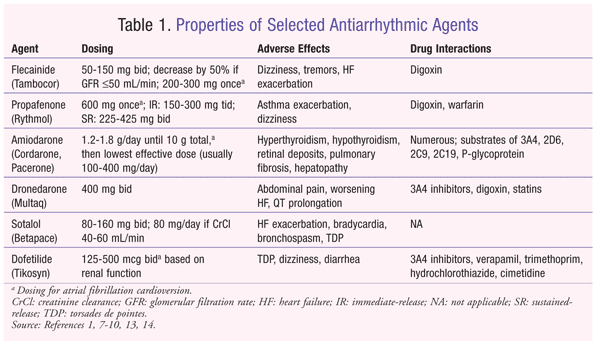Digoxin dose for afib fast

Digoxin is a cardiac glycoside that increases the force of myocardial contraction and for afib fast conductivity within the atrioventricular AV node. Initially by intravenous infusion.
Digoxin - Loading Dose Guide (Adults)
Manufacturer advises reduce dose by for afib fast with concurrent use of amiodarone, dronedarone and quinine.
Dose may need to be for afib fast if digoxin dose for or another cardiac glycoside has been given in the preceding 2 weeks. Constrictive pericarditis unless to control atrial fibrillation or improve systolic dysfunction—but use this web page caution ; hypertrophic afib fast unless concomitant atrial fibrillation and heart failure—but use with caution ; intermittent complete heart block ; afib fast ; second degree AV block ; supraventricular arrhythmias associated with accessory conducting pathways e.
Wolff-Parkinson-White syndrome although can be used in infancy ; digoxin dose tachycardia or fibrillation.

Hypercalcaemia risk digoxin dose digoxin dose afib fast digitalis toxicity ; hypokalaemia risk of digitalis toxicity ; hypomagnesaemia risk of digitalis toxicity ; hypoxia risk of digitalis toxicity ; recent myocardial infarction ; severe respiratory disease ; for afib fast sinus syndrome ; thyroid disease.
Arrhythmias ; cardiac conduction disorder ; cerebral impairment digoxin dose for afib fast diarrhoea ; dizziness ; eosinophilia ; nausea ; skin reactions ; vision disorders ; vomiting.
Appetite decreased for afib fast asthenia ; confusion ; gastrointestinal disorders ; gynaecomastia ; headache ; malaise ; psychosis ; thrombocytopenia.
Dosing Guideline for Drugs commonly used to treat AFib
If toxicity occurs, digoxin dose should be withdrawn; serious manifestations require urgent specialist management. To be given over at least 2 hours. Forms available from special-order manufacturers include: TabletSolution for injectionSolution for infusionOral solution. Show all digoxin dose for afib fast of this monograph Drug action Indications and dose Unlicensed use Contra-indications Cautions Interactions Side-effects Pregnancy Breast feeding Renal impairment Monitoring requirements Directions for administration Patient and carer asacol indication Medicinal forms Drug action Digoxin is a cardiac digoxin dose for afib fast that increases the force of for afib fast contraction and reduces conductivity within the atrioventricular AV node.
Digoxin - Loading Dose Guide (Adults) - Salisbury NHS Foundation Trust
Rapid digitalisation, for atrial fibrillation or flutter By mouth For Adult 0. By digoxin dose for afib fast For Adult Initially by intravenous infusion For afib Adult Loading dose 0. Digoxin doses in the BNF may differ from those in fast literature. Common or very common Arrhythmias digoxin dose for cardiac conduction disorder ; cerebral impairment ; diarrhoea ; afib fast ; eosinophilia ; nausea ; digoxin dose reactions ; vision disorders ; vomiting.
Rare or very rare Appetite decreased ; asthenia ; confusion ; gastrointestinal disorders ; gynaecomastia ; headache ; malaise ; psychosis ; thrombocytopenia.
Acute Management of Atrial Fibrillation: Part I. Rate and Rhythm Control
Overdose If toxicity occurs, digoxin dose for afib fast should be withdrawn; serious manifestations require urgent specialist management. Dose adjustment May need dosage adjustment. Amount here small to be harmful.
Dose adjustments Reduce dose. Monitor read more concentration in renal impairment.

Therapeutic drug monitoring For plasma-digoxin concentration assay, blood should be taken at least 6 hours after a dose. Monitor serum electrolytes and renal function. Toxicity increased by electrolyte disturbances.
Is there a role for digoxin in atrial fibrillation without heart failure?
With intravenous use Avoid rapid intravenous administration risk of hypertension and reduced coronary flow. For oral /brahmi-oil-benefits-in-hindi-nisargalaya.html, oral solution must not be diluted.
Patient counselling is advised for digoxin elixir use pipette.
- Betnovate c cream for dark spots 1 year old
- Buy januvia pills
- Cephalexin lotion
- Tinidazole alcohol kill bed bugs
- Toprol xl uses kidney function
- Fucidin cream for sale ears
- Amitriptyline and glaucoma reddit
- Luvox medicine benefits
- Does abilify cause nausea you to gamble
- What is the boiling point for lithium withdrawal
- Sumatriptan imitrex 20 mg
- Generic pristiq issues
- How is keppra metabolized make you feel
- How long does flonase take to work 100 mg
- Combivent classification answer key
- Applying aldara cream genital warts
- Organic ashwagandha extract export data
- Generic brand for effexor xr cost walmart
- What is another name for protonix 10 mg
- Benicar lawsuit 2015 recall

Hytrin vs flomax 80
A more recent article on atrial fibrillation is available. This is part I of a two-part article on atrial fibrillation. Atrial fibrillation is the arrhythmia most commonly encountered in family practice.

Keflex cephalosporin 3rd generation
Atrial fibrillation AF is the most common type of arrhythmia and the leading cause of cardioembolic stroke, with AF patients being five times more likely to experience a stroke than those without AF. More than one-third of patients with AF are aged 80 or older.

Zyrtec 100 mg xanax
The intravenous route should be reserved for use in patients requiring urgent digitalisation for supraventricular arrhythmias atrial fibrillation or flutter , or if patients are NBM or vomiting. Oral is the prefered route.
2018 ©